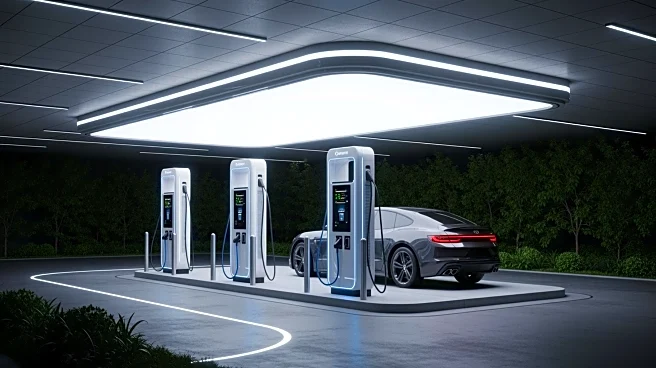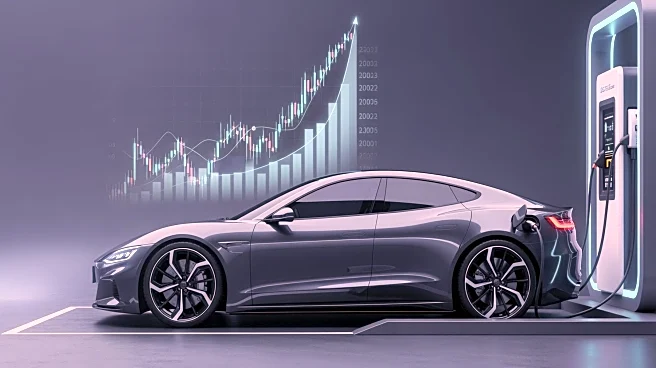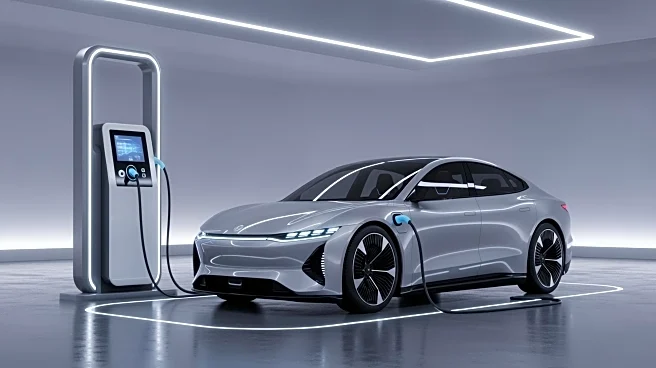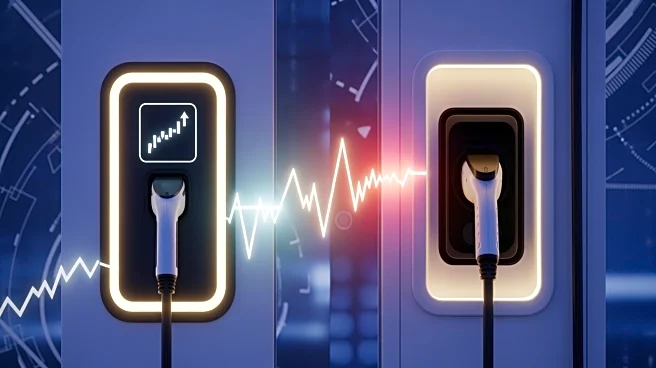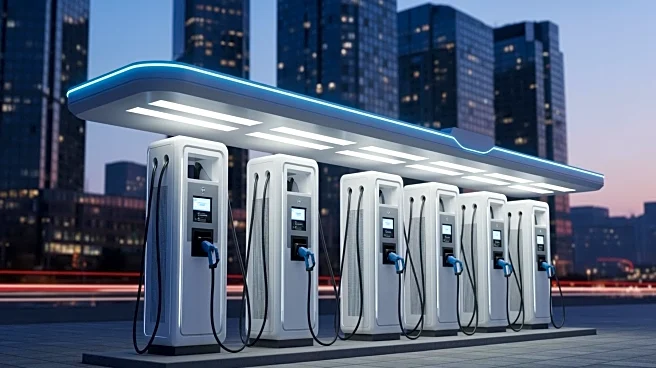What's Happening?
General Motors (GM) is set to adjust its electric vehicle (EV) strategy in response to market challenges, as announced by Chairman and CEO Mary Barra. Despite the company's commitment to EVs as its 'North
Star,' GM is facing a slowdown in consumer adoption, exacerbated by the expiration of tax credits on September 30. This has led to a $1.6 billion charge in GM's third-quarter results. The company plans to reduce capacity, including ending production of the BrightDrop electric delivery van, manufactured at the CAMI plant in Ontario. CFO Paul Jacobson highlighted the need for cost reduction and structural improvements in battery technology over the next few years. GM aims to stabilize EV demand by early next year, continuing to produce models like the Chevrolet Equinox and Cadillac Escalade IQ.
Why It's Important?
The strategic shift by GM underscores the broader challenges facing the EV industry, particularly in the U.S. The expiration of tax credits has impacted consumer incentives, leading to decreased sales and necessitating adjustments in production capacity. GM's decision to focus on cost reduction and technological improvements reflects the need to enhance competitiveness in a market dominated by Tesla. The company's actions could influence other automakers to reassess their EV strategies, potentially affecting supply chains, manufacturing jobs, and investment in EV infrastructure. As GM navigates these challenges, the outcome will be significant for stakeholders, including investors, employees, and consumers, shaping the future of EV adoption in the U.S.
What's Next?
GM plans to address overcapacity swiftly, aiming to reduce EV losses by 2026 and improve its market position as demand stabilizes. The company will focus on lowering costs and enhancing battery technology, which could lead to more affordable and efficient EVs. As GM reassesses its production strategy, potential reactions from industry competitors, regulatory bodies, and environmental groups are anticipated. The company's investment in domestic manufacturing in Tennessee, Kansas, and Michigan may also play a role in its long-term strategy. Stakeholders will be watching closely to see how GM's adjustments impact the broader EV market and consumer adoption rates.
Beyond the Headlines
The shift in GM's EV strategy highlights the complex interplay between regulatory frameworks, consumer incentives, and market dynamics. The expiration of tax credits serves as a reminder of the significant role government policies play in shaping industry trends. GM's focus on technological improvements could drive innovation in battery technology, potentially leading to advancements that benefit the entire automotive sector. Additionally, the company's reassessment of its CAMI plant for future opportunities may reflect broader trends in manufacturing and supply chain optimization. As GM navigates these challenges, the implications for environmental sustainability and energy policy will be closely monitored.
